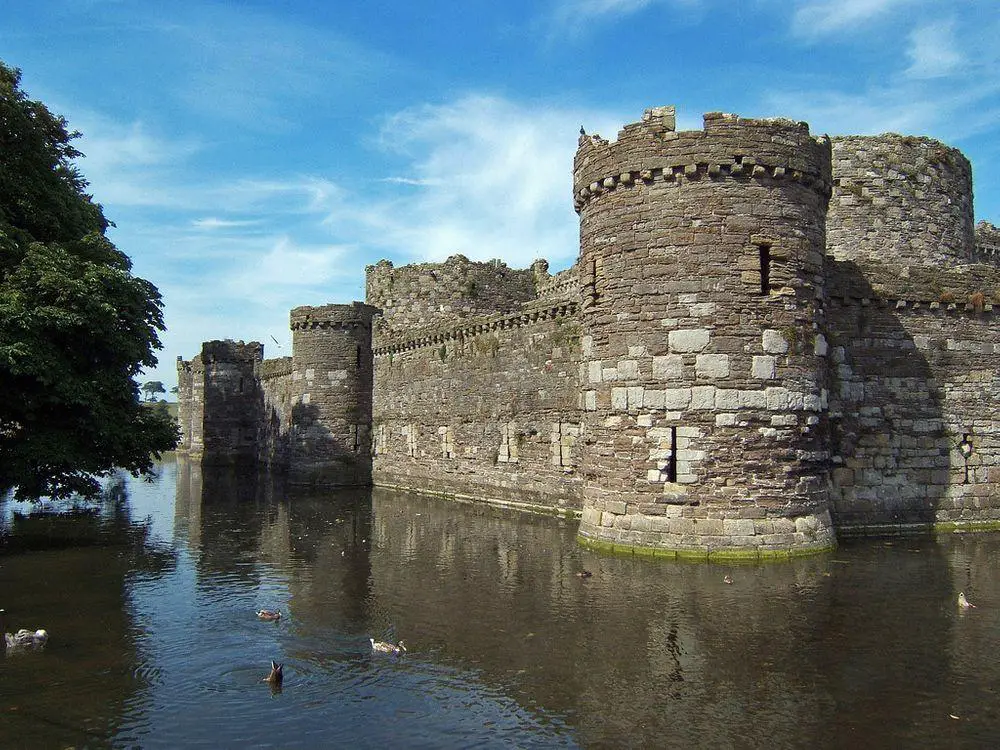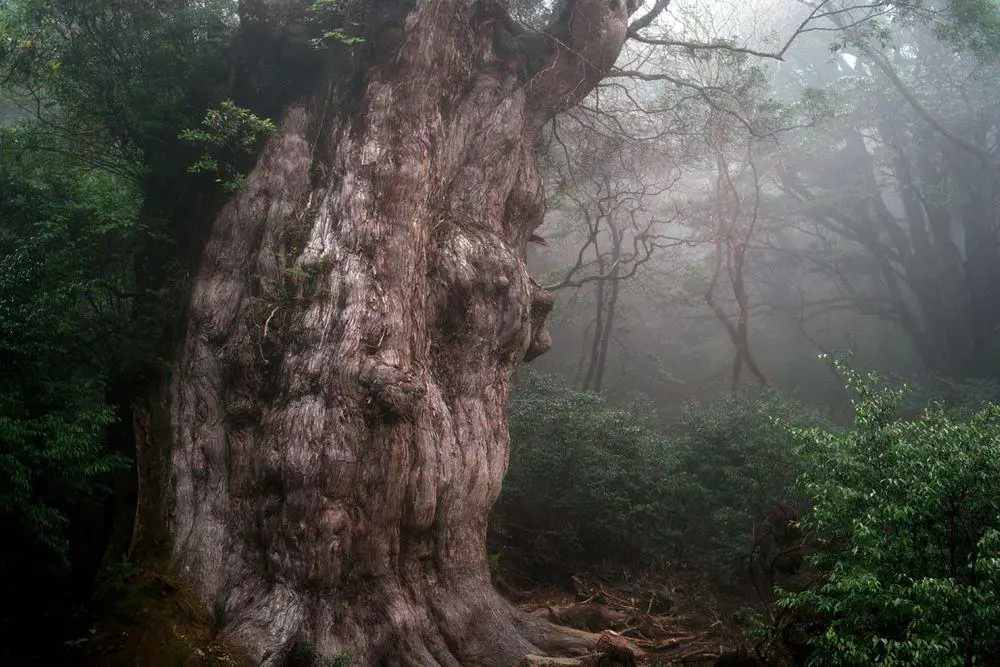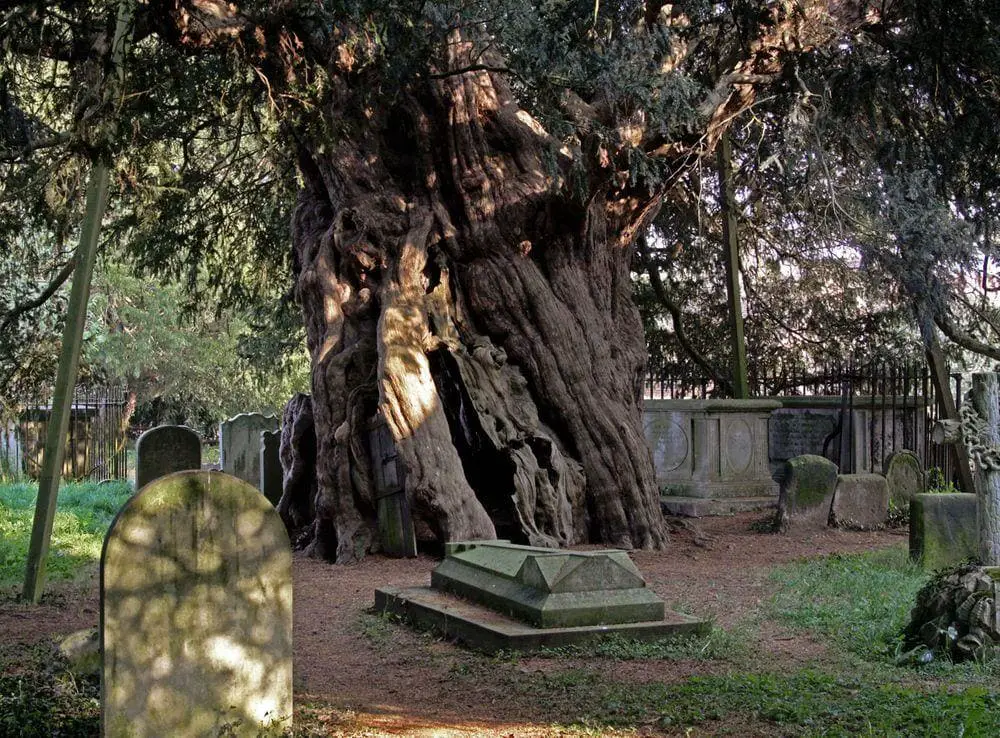 In short
In short
An unusual tree is the giant yew tree at Llanarth St Teilo’s Church. It has an unusual trunk – a giant ball of hollowed wood with numerous younger offshoots rising from it.
 34.3%
34.3%
GPS coordinates
Location, address
Species
Circumference
Map of the site
If you see this after your page is loaded completely, leafletJS files are missing.
 In detail
In detail
St Teilo’s Church is a small rural church that, most likely, was built in the 15th century in Perpendicular and Decorated Gothic styles. Later it was reconstructed and rebuilt several times, including major works in 1884-1885 when the top of its tower was rebuilt as well (2.). After this, the church gradually fell into disrepair and in 2013 it was closed. In 2023 finances were awarded for the planning of reconstruction works.
South of St Teilo’s Church grows a wonderful tree – a giant female yew. Its trunk to some extent resembles a giant pumpkin with an enormous hollow. Inside the enormous hollow grows a younger trunk – an aerial root. The hollow gradually divides the tree into two parts. Numerous larger and smaller branches and trunks rise from it. Thick stems of ivy twine around the trunk – although ivy was to a large extent removed in 2023. The circumference in the height of 0.5 m is 10.06 m (2017., 3.) but, close to the ground level it could be slightly smaller.
In the churchyard are two more large yew trees. One has a circumference above 4.88 m (2014, 1.) and the other one – 3.38 m (at a height of 0.3 m) (2014., 1.).
References
- Tim Hills, Llanarth, St Teilo, Ancient Yew Group, 2020. Accessed on December 22, 2023.
- Church of Saint Teilo, British Listed Buildings. Accessed on December 22, 2023.
- Yew/Yews at Llanarth Wales, Ancient Yew Group, 2020. Accessed on December 22, 2023.
Yew at Llanarth St Teilo’s Church is included in the following article:
 Linked articles
Linked articles

Wonders of Wales
In Wales are located some of the most beautiful caves and waterfalls in the United Kingdom but even more are some of the world’s most impressive castles as well as medieval towns, palaces, and interesting archaeological monuments.

Trees
The category includes some of the most impressive and interesting separate trees in the world. The total number of tree species in the world still is a wild guess – maybe 10,000 and maybe 100,000 but most likely somewhere in between. Every month there are reported new tree species from the whole world, including Western Europe.

Wonders of the United Kingdom
Throughout many centuries the United Kingdom has enjoyed relative political stability and wealth. As a result, humans have created here countless amazing and well-preserved values of art and history.
 Recommended books
Recommended books
The God Tree
The God Tree is a great read and will make people think again and again about Yews’ – David Bellamy, the Naturalist. This is the first book to take up the quest for the Golden Bough since JG Frazer’s classic study in 1915 with the discovery of the bough growing once more, as the rare adornment of a small number of ancient Yews.
The Ancient Yew: A History of Taxus baccata
The gnarled, immutable yew tree is one of the most evocative sights in the British and Irish language, an evergreen impression of immortality, the tree that provides a living botanical link between our own landscapes and those of the distant past. This book tells the extraordinary story of the yew’s role in the landscape through the millennia, and makes a convincing case for the origins of many of the oldest trees, as markers of the holy places founded by Celtic saints in the early medieval ‘Dark Ages’.



